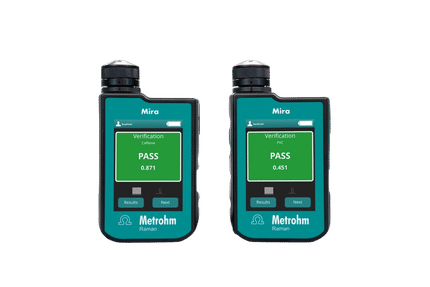Radio waves are electromagnetic waves occurring on the radio frequency portion of the electromagnetic spectrum. A common use is to transport information through the atmosphere or outer space without wires. Radio waves are distinguished from other kinds of electromagnetic waves by their wavelength, a relatively long wavelength in the electromagnetic spectrum.
What Makes Radio Waves?
Radio waves are usually produced by electric current alternating at radio frequency flowing in a special purpose conductor, called an antenna. Antenna dimensions must generally be comparable to wavelength to work efficiently. Very long waves are not practical because of the enormous antennas needed to produce them, although they are sometimes produced by lightning. Radio waves are also produced by cosmic phenomena in deep space. Actually, any kind of reciprocating motion of electric charges or magnets can produce radio waves if it is fast enough. Although very impractical, even a person waving a charged stick very fast can produce faint radio waves.
Propagation of Radio Waves
Propagation is a term that describes the travel of electromagnetic waves, there being three main modes of propagation. The first is a straight line travel: the manner that radio waves travel through deep space (ignoring the slight deviations caused by gravity under the theory of relativity). A second way is skip, which is bouncing between the surface of the earth and the ionosphere. Frequencies between 3 MHz and 30 MHz are most reliable for this kind of propagation, called High Frequency. The third way is to hug the surface of the earth as it curves around. Radio waves of very low frequency most often travel this way.
Historical Discovery
Radio waves were first predicted by mathematical work done in 1865 by James Clerk Maxwell. Maxwell noticed wave-like properties of light and similarities in electrical and magnetic observations and proposed equations that described light waves and radio waves as waves of electromagnetism that travel in space. In 1887 Heinrich Hertz demonstrated the reality of Maxwell's electromagnetic waves by experimentally generating radio waves in his laboratory. Many inventions followed making practical use of radio waves to transfer information through space.
Italian engineer Guglielmo Marconi is generally credited with inventing radio. In 1895 he transmitted a signal 2.4 kilometres in the grounds of his father's property. He patented the first 'wireless telegraphy' system in 1896.
Radio Portion of the Electromagnetic Wave Spectrum
Radio waves are divided up into bands by frequency (and corresponding wavelength) as shown in the radio frequency spectrum table below.
| Band name
| Abbr
| ITU band
| Frequency
and
Wavelength
| Example uses
|
|
|
|
| < 3 Hz
> 100,000 km
|
|
| Extremely low frequency
| ELF
| 1
| 3–30 Hz
100,000 km – 10,000 km
| Communication with submarines
|
| Super low frequency
| SLF
| 2
| 30–300 Hz
10,000 km – 1000 km
| Communication with submarines
|
| Ultra low frequency
| ULF
| 3
| 300–3000 Hz
1000 km – 100 km
| Communication within mines
|
| Very low frequency
| VLF
| 4
| 3–30 kHz
100 km – 10 km
| Submarine communication, avalanche beacons, wireless heart rate monitors, geophysics
|
| Low frequency
| LF
| 5
| 30–300 kHz
10 km – 1 km
| Navigation, time signals, AM longwave broadcasting
|
| Medium frequency
| MF
| 6
| 300–3000 kHz
1 km – 100 m
| AM (Medium-wave) broadcasts
|
| High frequency
| HF
| 7
| 3–30 MHz
100 m – 10 m
| Shortwave broadcasts, amateur radio and over-the-horizon aviation communications
|
| Very high frequency
| VHF
| 8
| 30–300 MHz
10 m – 1 m
| FM, television broadcasts and line-of-sight ground-to-aircraft and aircraft-to-aircraft communications
|
| Ultra high frequency
| UHF
| 9
| 300–3000 MHz
1 m – 100 mm
| television broadcasts, microwave ovens, mobile phones, wireless LAN, Bluetooth, GPS and Two-Way Radios such as FRS and GMRS Radios
|
| Super high frequency
| SHF
| 10
| 3–30 GHz
100 mm – 10 mm
| microwave devices, wireless LAN, most modern Radars
|
| Extremely high frequency
| EHF
| 11
| 30–300 GHz
10 mm – 1 mm
| Radio astronomy, high-speed microwave radio relay
|
|
|
|
| Above 300 GHz
< 1 mm
|
|
Notes
- Above 300 GHz, the absorption of electromagnetic radiation by Earth's atmosphere is so great that the atmosphere is effectively opaque to higher frequencies of electromagnetic radiation, until the atmosphere becomes transparent again in the so-called infrared and optical window frequency ranges.
- The ELF, SLF, ULF, and VLF bands overlap the AF (audio frequency) spectrum, which is approximately 20–20,000 Hz. However, sounds are transmitted by atmospheric compression and expansion, and not by electromagnetic energy.
- The SHF and EHF bands are sometimes not considered to be a part of the radio spectrum, forming their own microwave spectrum.
Named frequency bands
General
Broadcast Frequencies:
- Longwave AM Radio = 148.5 - 283.5 kHz (LF)
- Mediumwave AM Radio = 530 kHz - 1710 kHz (MF)
- TV Band I (Channels 2 - 6) = 54 MHz - 88 MHz (VHF)
- FM Radio Band II = 88 MHz - 108 MHz (VHF)
- TV Band III (Channels 7 - 13) = 174 MHz - 216 MHz (VHF)
- TV Bands IV & V (Channels 14 - 69) = 470 MHz - 806 MHz (UHF) [1]
For more information see the NTIA frequency allocation chart: http://www.ntia.doc.gov/osmhome/allochrt.html
Amateur radio frequencies
The range of allowed frequencies vary between countries. These are just some of the more common bands, often collectively termed shortwave. The article amateur radio contains another list.
| Band | Frequency range
|
| 160 m | 1.8 to 2.0 MHz
|
| 80 m | 3.5 to 4.0 MHz
|
| 60 m | 5.3 to 5.4 MHz
|
| 40 m | 7 to 7.3 MHz
|
| 30 m | 10.1 to 10.15 MHz
|
| 20 m | 14 to 14.35 MHz
|
| 15 m | 21 to 21.45 MHz
|
| 12 m | 24.89 to 24.99 MHz
|
| 10 m | 28.0 to 29.7 MHz
|
| 6 m | 50 to 54 MHz
|
| 2 m | 144 to 148 MHz
|
| 70 cm | 430 to 440 MHz
|
| 33 cm | 902 to 928 MHz
|
| 23 cm | 1240 to 1300 MHz
|
IEEE US
| Band | Frequency range | Origin of name
|
| HF band | 3 to 30 MHz | High Frequency
|
| VHF band | 30 to 300 MHz | Very High Frequency
|
| UHF band | 300 to 3000 MHz | Ultra High Frequency
Frequencies from 216 to 450 MHz were sometimes called P-band: Previous, since early British Radar used this band but later switched to higher frequencies.
|
| L band | 1 to 2 GHz | Long wave
|
| S band | 2 to 4 GHz | Short wave
|
| C band | 4 to 8 GHz | Compromise between S and X
|
| X band | 8 to 12 GHz | Used in WW II for fire control, X for cross (as in crosshair)
|
| Ku band | 12 to 18 GHz | Kurz-under
|
| K band | 18 to 26 GHz | German Kurz (short)
|
| Ka band | 26 to 40 GHz | Kurz-above
|
| V band | 40 to 75 GHz
|
| W band | 75 to 111 GHz | W follows V in the alphabet
|
EU, NATO, US ECM Frequency Designations
| Band | Frequency range
|
| A band | 0 to 0.25 GHz
|
| B band | 0.25 to 0.5 GHz
|
| C band | 0.5 to 1.0 GHz
|
| D band | 1 to 2 GHz
|
| E band | 2 to 3 GHz
|
| F band | 3 to 4 GHz
|
| G band | 4 to 6 GHz
|
| H band | 6 to 8 GHz
|
| I band | 8 to 10 GHz
|
| J band | 10 to 20 GHz
|
| K band | 20 to 40 GHz
|
| L band | 40 to 60 GHz
|
| M band | 60 to 100 GHz
|
Waveguide frequency bands
| Band | Frequency range [1]
|
| R band | 1.70 to 2.60 GHz
|
| D band | 2.20 to 3.30 GHz
|
| S band | 2.60 to 3.95 GHz
|
| E band | 3.30 to 4.90 GHz
|
| G band | 3.95 to 5.85 GHz
|
| F band | 4.90 to 7.05 GHz
|
| C band | 5.85 to 8.20 GHz
|
| H band | 7.05 to 10.00 GHz
|
| X band | 8.2 to 12.4 GHz
|
| Ku band | 12.4 to 18.0 GHz
|
| K band | 15.0 to 26.5 GHz
|
| Ka band | 26.5 to 40.0 GHz
|
| Q band | 33 to 50 GHz
|
| U band | 40 to 60 GHz
|
| V band | 50 to 75 GHz
|
| W band | 75 to 110 GHz
|
| Y band | 325 to 500 GHz
|
References
- ^ www.microwaves101.com "Waveguide frequency bands and interior dimensions"
- ITU-R Recommendation V.431: Nomenclature of the frequency and wavelength bands used in telecommunications. International Telecommunication Union, Geneva.
- ANSI/IEEE Standard: Letter designations for radar-frequency bands.
- AFR 55-44/AR 105-86/OPNAVINST 3430.9A/MCO 3430.1, 27 October 1964 superseded by AFR 55-44/AR 105-86/OPNAVINST 3430.1A/MCO 3430.1A, 6 December 1978: Performing Electronic Countermeasures in the United States and Canada, Attachment 1,ECM Frequency Authorizations.
See also
- Radio propagation
- Frequency allocation
- Radio astronomy
- Radio electronics
References
- James Clerk Maxwell, "A Dynamical Theory of the Electromagnetic Field", Philosophical Transactions of the Royal Society of London 155, 459-512 (1865).
- Heinrich Hertz, "Electric waves: being researches on the propagation of electric action with finite velocity through space". Cornell University Library Historical Monographs Collection. {Reprinted by} Cornell University Library Digital Collections
|







